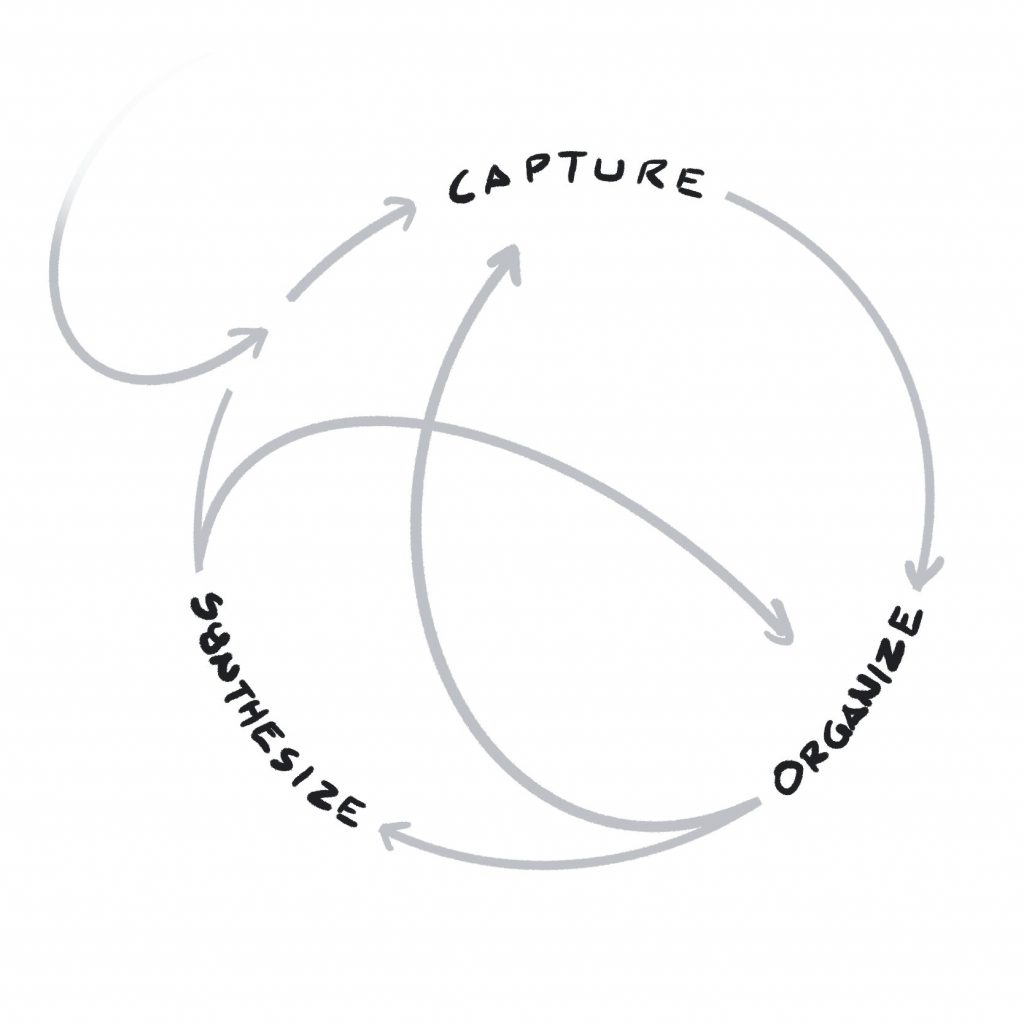
If the value of thought is its ability to create and add value to our lives and lives of others, then it is paramount importance to discover what tools assist us with “having better thoughts”, but to further understand this, is the notion that we can only manage what we can measure, and we can only measure what we can at least begin to understand.
So, then, what is the process of thought to creation?
- Unconscious R&D
At each successive phase, your creative work becomes more defined. Yet, the phases aren’t linear. Capture-organize-synthesize is recursive. It loops over and over until you snapshot an artifact you’re happy with.
Arguably, this substack holds a kind of origin to this blog, as it began the process of my workflow improvement and management. It also began the process eventually of leading me to Obsidian, a knowledge management system which I hope to discuss further in how I use it.
- What is Obsidian, and why use it?
From the “Linking Your Thinking” channel, this is a pretty decent introduction to Obsidian as a note-taking software plus. There’s a lot more to discuss on the concept, but the basic and powerful idea is that it captures information, and then allows the information to link to each other through “graphs” like the one below. This remarkably resembles a neural net, effectively paralleling the concept of a “second brain” as it attempts to assemble information in the same way that our brains usually hold it.
Below pictures tell a thousand words, and an animation also have a relative strength in information flow versus still images:

I’m a major fan of fasting for its array of health benefits, but in particular for its cognitive benefits. I have fairly detailed writeups on my five-day fasts as well as version of it on a ketogenic fast-mimicking diet which I’ll upload later. In the meanwhile, the simple awareness of fasting and its positive effects on BDNF, a major neurochemical used in cognition known sometimes as “miracle gro for the brain” should suggest that fasting is something to definitely worth looking into.

- Command & Colors: Ancients
While I’m sure that most of the cool kids are playing Elden Ring and being a major fan of Sekiro and FromSoft myself, I should probably look into it, I’ve been somewhat distracted by a rather excellent board game known as Command & Colors which actually captures such as the confusion and fog of war. This is something which I think is very much underestimated in most depictions, which often assume perfect information(chess is an excellent example). This is not only an unrealistic depiction of warfare(as might be noted in today’s informational buzz and chaos with the Russian/Ukranian war) but also not a very accurate depiction of many decisions in life in general, where the presence of unknown unknowns often are a factor.
- Influence of framing on medical decision making
When making decisions, people will be influenced by the different semantic descriptions of the same issue, and have different risk preferences, which is called the framing effect indicating that people make decisions based on the potential value of losses and gains rather than the final outcome.
When placed in a positive frame, e.g. would people choose to save 200 lives for certain at 100% chance, rather than save 600 people at 33% chance, individuals consistency choose for the risk-averse option. Yet, when the same options are placed in a negative frame, e.g. would people choose to kill 400 lives, or would they choose to have a 33% chance of no one dying and 66% percent chance of 600 lives dying, individuals choose the risk-seeking option. This reminds me of the concept of hyperbolic discounting.
Twitter Takes